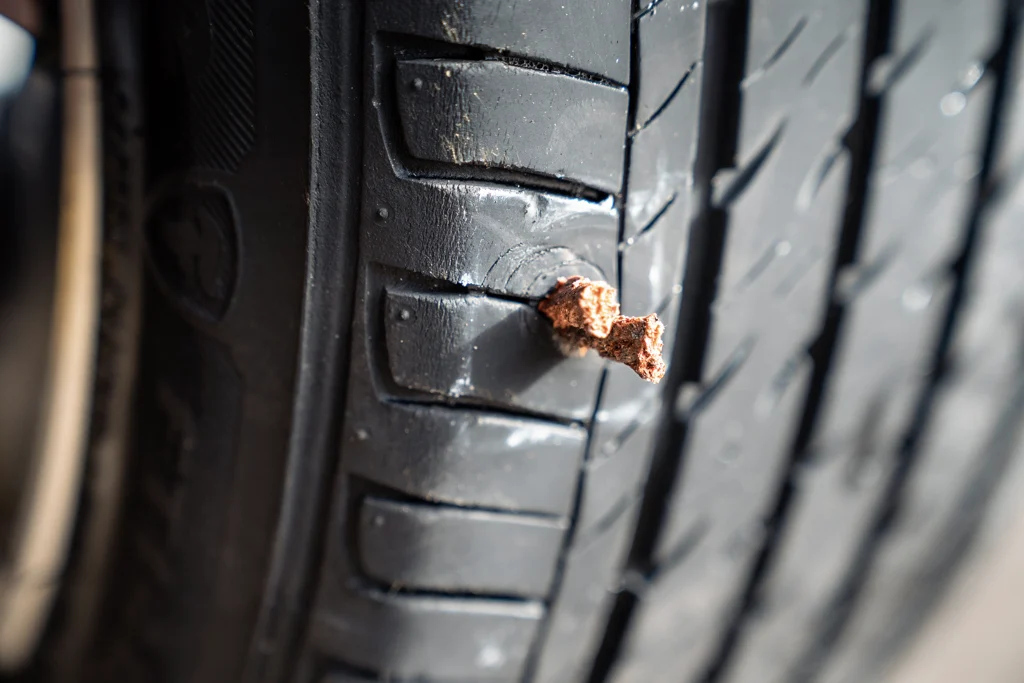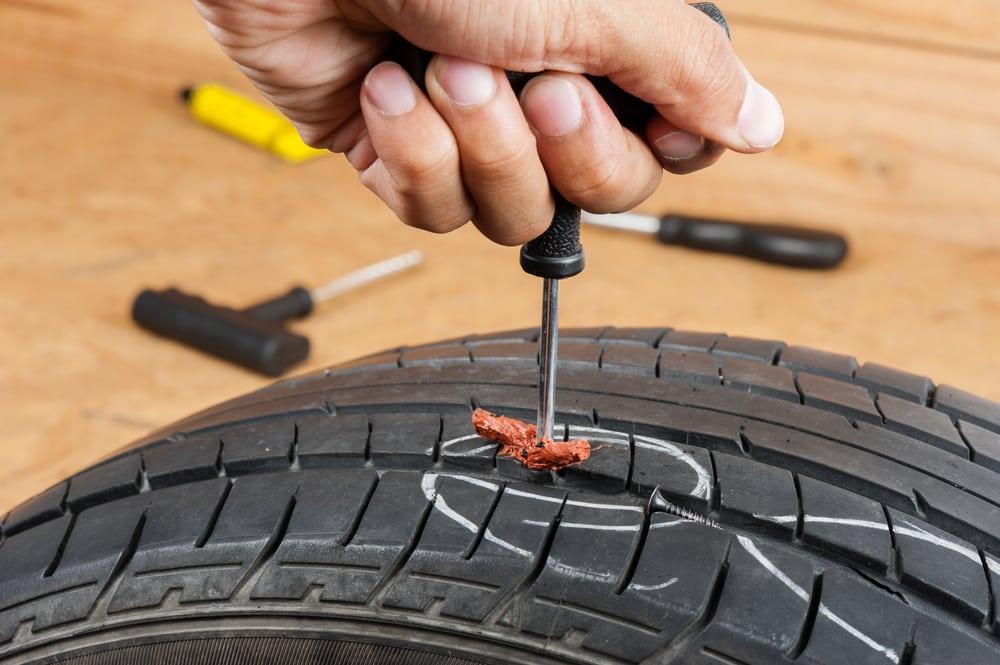Tire plugs can last up to seven to ten years if installed correctly. Their longevity depends on driving conditions and maintenance.
Tire plugs are a quick and cost-effective solution for minor punctures. They offer a temporary fix, allowing drivers to get back on the road quickly. Proper installation is crucial for their effectiveness and longevity. Regular tire inspections help ensure the plug remains secure and functional.
Factors like driving habits, road conditions, and tire quality also influence their lifespan. While plugs can last several years, they are not a permanent solution. It’s advisable to consider a professional tire repair or replacement for long-term safety and performance. Always keep an eye on your tires to prevent unexpected issues.

The Lifespan Of Tire Plugs
Tire plugs are a quick fix for punctured tires. They can be lifesavers in emergencies. But how long do they last? This question is crucial for vehicle safety. Let’s explore the lifespan of tire plugs.
Factors Affecting Durability
The durability of tire plugs depends on several factors:
- Quality of the Plug: High-quality plugs last longer.
- Type of Puncture: Small punctures are easier to repair.
- Driving Conditions: Rough roads wear out plugs faster.
- Installation Process: Proper installation ensures a longer life.
Average Mileage Expectancy
On average, tire plugs last between 7,500 to 20,000 miles. Here’s a quick overview:
| Mileage | Condition |
|---|---|
| 7,500 miles | Poor road conditions |
| 15,000 miles | Moderate road conditions |
| 20,000 miles | Optimal road conditions |
Remember, these numbers are estimates. Actual lifespan varies based on the factors mentioned above.
Types Of Tire Repairs
Understanding the types of tire repairs is essential. This can help you make informed decisions. Let’s explore the various repair options available.
Plug Vs. Patch Vs. Replace
Tire repair methods vary. Plugs, patches, and replacements are the main types. Each has its own use and advantages.
| Repair Type | Description | Best Used For |
|---|---|---|
| Plug | A plug fills the puncture from the inside. | Small holes in the tread area. |
| Patch | A patch covers the puncture from the inside. | Larger holes or sidewall damage. |
| Replace | Replacing the tire is for severe damage. | Irreparable punctures or worn-out tires. |
Pros And Cons Of Plugging
Plugging a tire has its pros and cons. Knowing these can help you decide.
- Pros:
- Quick and easy to perform.
- Cost-effective solution.
- Suitable for minor tread punctures.
- Cons:
- Not perfect for large punctures.
- May not seal completely in some cases.
- Shorter lifespan compared to patches.
Proper Installation Of Tire Plugs
Proper installation of tire plugs is crucial for ensuring their longevity. A well-installed tire plug can help you avoid frequent tire issues. Let’s dive into a detailed guide on how to install tire plugs correctly.
Step-by-step Guide
- Identify the Puncture: Locate the hole in the tire. Mark it with chalk.
- Remove the Object: Use pliers to pull out the nail or screw.
- Ream the Hole: Use a reaming tool to clean and widen the puncture.
- Prepare the Plug: Thread the plug through the insertion tool.
- Insert the Plug: Push the plug into the hole until two-thirds is inside.
- Trim Excess Plug: Cut off the excess plug material flush with the tire surface.
- Inflate the Tire: Reinflate the tire to the recommended pressure.
- Check for Leaks: Use soapy water to ensure no air is escaping.
Common Mistakes To Avoid
- Skipping the Reaming Step: Always ream the hole to ensure a snug fit for the plug.
- Improper Plug Insertion: Make sure the plug is inserted deep enough.
- Ignoring Tire Pressure: Always check and maintain correct tire pressure after plugging.
- Not Checking for Leaks: Use soapy water to confirm the plug is airtight.
- Using the Wrong Plug: Ensure you use a plug suitable for the tire type and size.

When To Plug And When To Pass
Knowing when to plug a tire and when to replace it is crucial. A wrong decision can lead to safety risks and extra costs. This section will guide you on making the right choice.
Assessing Tire Damage
Before deciding, assess the tire damage. Look for punctures, cuts, and other signs. A puncture on the tread is often easy to fix. If the damage is on the sidewall, consider replacing the tire.
Use a table for quick reference:
| Location of Damage | Action |
|---|---|
| Tread | Plug |
| Sidewall | Replace |
Safety Considerations
Safety is paramount. A properly plugged tire can be safe for short distances. For long trips, always use a fully intact tire. Check the depth of the tread. If it is too low, replace the tire.
Follow these safety tips:
- Inspect the plug regularly.
- Avoid high speeds with a plugged tire.
- Replace the tire if in doubt.
Extending The Life Of Your Tire Plugs
Extending the life of your tire plugs is essential for safe driving. Proper care helps maintain the longevity and effectiveness of tire plugs.
Maintenance Tips
Regular maintenance can greatly increase the lifespan of your tire plugs. Follow these tips:
- Check the plug after driving on rough roads.
- Inspect the tire for any signs of new damage.
- Reinflate tires to the recommended pressure.
- Clean the area around the plug to prevent dirt buildup.
Monitoring Tire Health
Monitoring the health of your tires ensures the plugs remain effective.
Use the following steps to keep an eye on your tires:
- Visually inspect your tires every week.
- Check for any unusual wear patterns.
- Use a tire gauge to monitor air pressure.
- Listen for any hissing sounds indicating a new leak.
Keeping your tires in good condition helps extend the life of your tire plugs. This ensures safer and more reliable driving experiences.

Warning Signs To Watch Out For
When it comes to tire plugs, knowing the warning signs of failure can save you from unexpected breakdowns. It is vital to recognize these signs to ensure your vehicle’s safety. In this section, we will explore the symptoms of plug failure and discuss when to seek professional help.
Symptoms Of Plug Failure
Recognizing the symptoms of a failing tire plug is crucial. Here are the common signs to watch for:
- Slow Air Leak: A tire that slowly loses air indicates a plug issue.
- Visible Damage: Look for cracks or damage around the plug area.
- Uneven Wear: Uneven tire wear suggests the plug is failing.
- Wobbling: Your car may wobble due to an unstable plug.
When To Seek Professional Help
Knowing when to seek professional help can prevent further damage. Here are the conditions that require expert assistance:
- Persistent Air Loss: If the tire keeps losing air, consult a technician.
- Multiple Repairs: More than one plug in a tire demands a professional check.
- Severe Damage: A plug can’t fix large or sidewall damages; seek help.
- High-Speed Driving: Frequent high-speed driving needs a professional inspection.
Regularly inspecting your tires for these warning signs ensures a safer driving experience. If you notice any of these symptoms, it’s wise to seek professional help immediately.
Frequently Asked Questions
How Long Can You Drive On A Plugged Tire?
You can drive on a plugged tire for several hundred miles. However, it’s best to replace or professionally repair the tire soon.
Is Plugging A Tire A Permanent Fix?
Plugging a tire is not a permanent fix. It offers a temporary solution. Always consult a professional for a lasting repair.
How Reliable Is A Tire Plug?
A tire plug is generally reliable for minor punctures. It should be used as a temporary fix. For long-term safety, consider professional repair. Regularly check the tire’s condition to avoid issues.
How Many Miles Will A Tire Plug Last?
A properly installed tire plug can last 7,000 to 25,000 miles. It depends on driving conditions and plug quality. Regular inspections are essential for safety.
Conclusion
Tire plugs can be a temporary fix, but their longevity varies. Regularly check your tires for safety. If unsure, consult a professional. Proper maintenance and timely replacement ensure a smooth ride. Always prioritize safety and invest in quality tire repairs.
Thank you for reading, and drive safe!





















